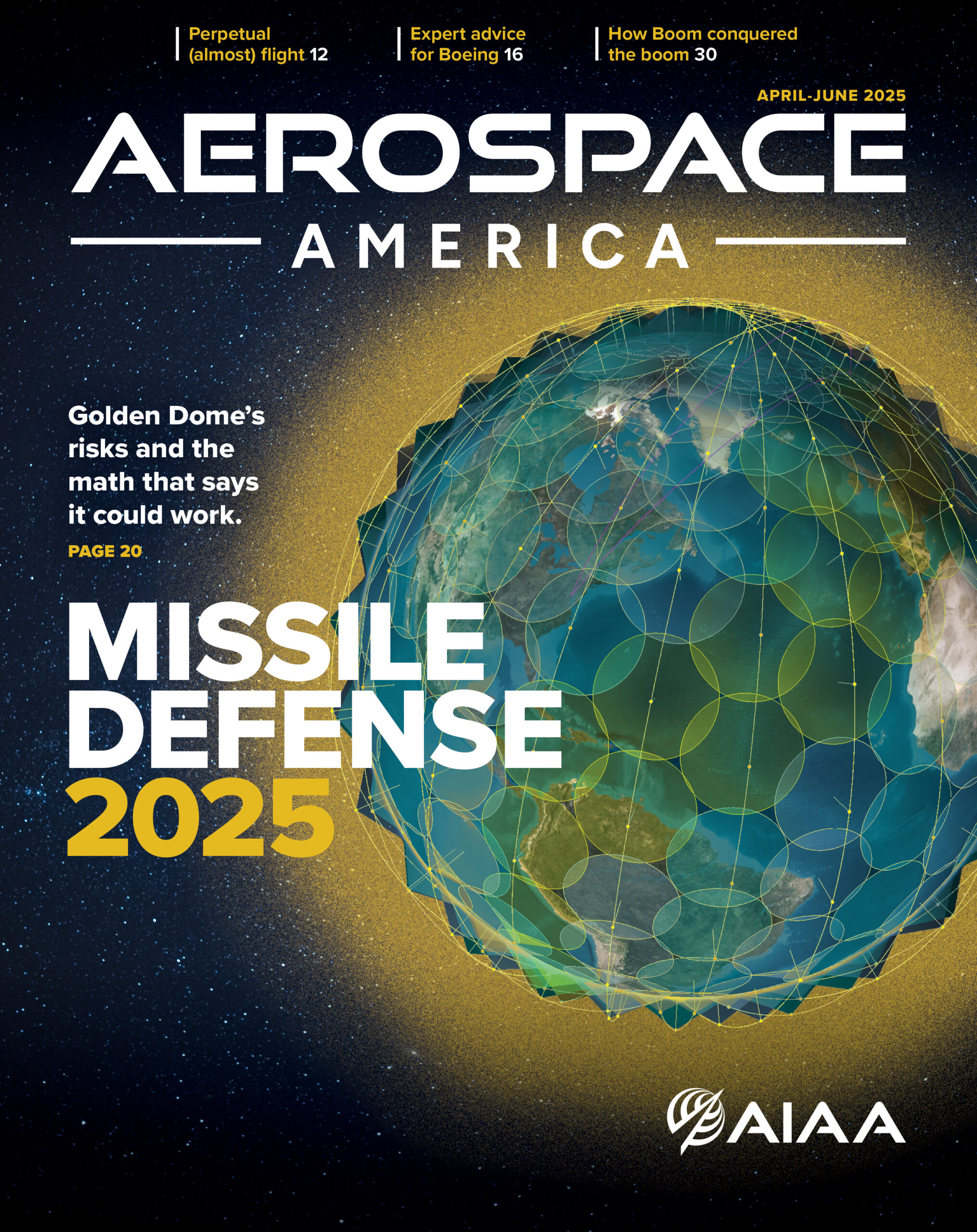Stay Up to Date
Submit your email address to receive the latest industry and Aerospace America news.
WASHINGTON, D.C. — Across a workforce of 3 million, fewer than 50,000 personnel at the Pentagon are using some form of artificial intelligence application in their job duties. That’s well below the rate of the generation population, according to Emil Michael, under secretary for research and engineering at the U.S. Defense Department.
Michael — who in recent days absorbed authority of the CDAO, the Chief Digital and Artificial Intelligence Office and was named temporary head of the Defense Innovation Unit amid previous director Doug Beck’s resignation — told an audience at the National Defense Industrial Association’s Emerging Technologies Conference on Wednesday that his top priorities include “pushing AI into every corner of the department where it can be useful.”
“We have to be AI-first in the department. That means every new thing we do, we have to think about how AI can be brought into it,” Michael said. “Should it be brought into it, how it should be brought into it, and how it will change in nature what we do, and that includes building systems. If you’re doing AI [as you’re] designing a new weapon system, maybe you could predict fewer faults and fewer engineering challenges later on.”
That likely applies to Golden Dome, the White House’s ambitious plan for a multilayered national missile defense shield, Michael said. While the Pentagon has reportedly limited officials from speaking about Golden Dome plans, and Michael stressed that he does not own the defense shield program or have purview over it, he said he sees ways the technology set could make its operations more effective.
“What does AI do? It takes lots of language or lots of equations, it synthesizes them and can give you answers that are beyond human compute power in a short timeframe,” Michael said. “If you have a lot of different scenarios, say you’re in a conflict scenario, AI can help the warfighter discern what’s happening in an environment using sensors or using sort of tactics that the adversary might use, and give them a set of decisions that they get to make. You simplify the choice set for them, which makes them more effective. And that could be in Golden Dome.”
He added: “What I’m trying to do is bring AI platforms to bear for use by Golden Dome, by [U.S. Indo-Pacific Command], by the corporate user at DoD who sits in the Pentagon, by the defense contractors. Trying to make the capability available so that any user can use it.”
- RELATED READING — Golden Dome: Smart strategy or risky business?
- RELATED READING — Golden Dome analysis: Why the plan could work
Michael’s AI strategy for the Pentagon involves introducing metrics to show productivity gains through AI — for example, documents created and work hours saved — as well as novel benchmarks, such as increase in usership and “is it making a difference in the fight,” he said. These specifics, he said, are set to be rolled out over the next several months.
His list of AI taskers is already substantial. When he received authority over CDAO earlier this month, Deputy Secretary of Defense Steve Feinberg gave him a 120-day deadline to deliver a pathway forward for two prominent AI-based data platforms, Maven Smart System and Advana.
AI seems poised to climb to the top of DoD’s critical technologies list, overseen by Michael’s office. While the list of technologies, which currently stands at 14, has traditionally grown with each successive office-holder, Michael said he’s interested in slimming it down and transitioning from roadmaps for technology development and adoption to sprints toward specific goals.
“What I’m trying to do is make a smaller number [of technologies] that’s digestible and that people wake up every day thinking about,” he said.
Items currently on the list, including computer chips and critical minerals, might be better served as long-range tasks, Michael suggested, while others are a better fit for the sprint model.
“AI is the biggest one. It’s the biggest opportunity that the DoD has to embrace going forward,” Michael said, adding that directed energy and hypersonic weapons are also high on the list.
“You’re going to see those are two very important technologies that haven’t scaled yet,” he said, describing the potential for directed-energy weapons to provide cost-effective drone and missile defense against adversaries like the Iran-backed Houthi rebels in Yemen.
As far as what the transition to technology sprints will look like, “stay tuned,” Michael said. “We’ll have some more news to make about that in a month or so.”
About Hope Hodge Seck
Hope is an award-winning freelance reporter and editor based in Washington, D.C., who has covered U.S. national defense since 2009. A former managing editor of Military.com, her work has appeared in The Washington Post, Popular Mechanics and Politico Magazine, among other publications.
Related Posts
Stay Up to Date
Submit your email address to receive the latest industry and Aerospace America news.




